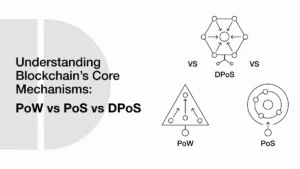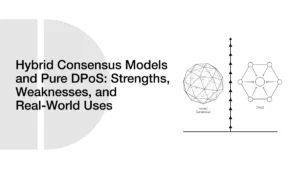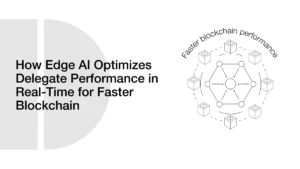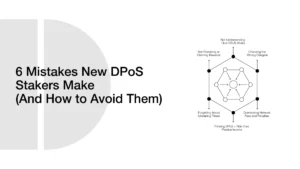Why DPoS Is One of the Most Energy-Efficient Blockchain Consensus Models
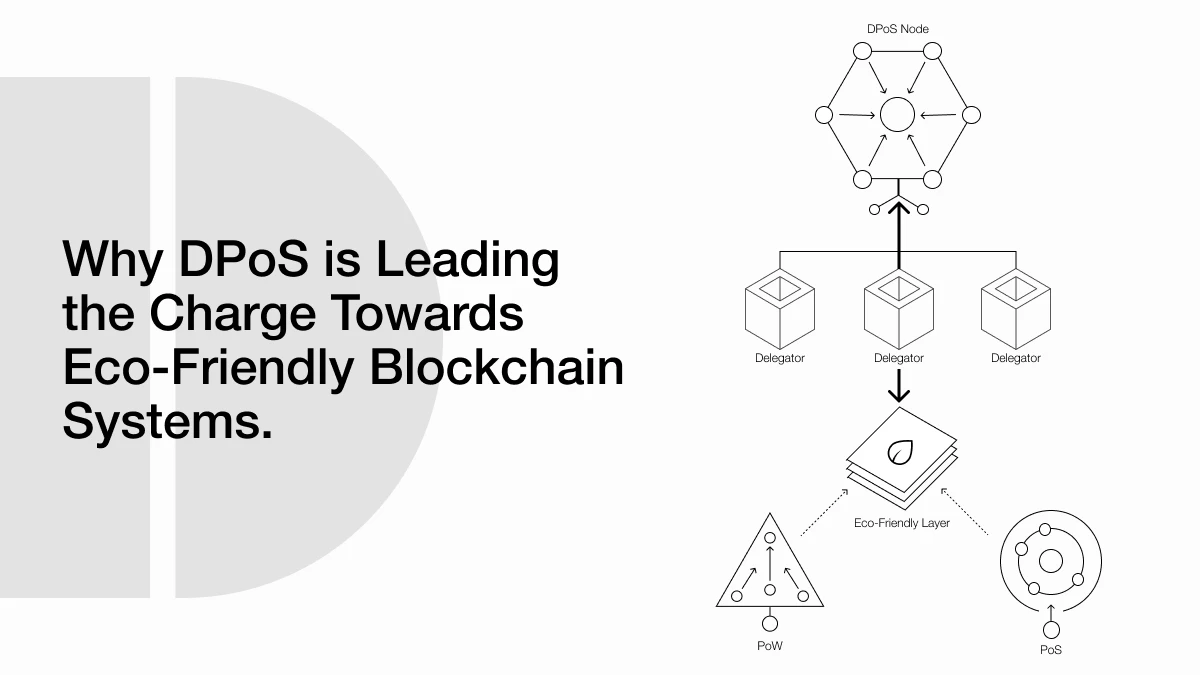
The meteoric ascent of blockchain technology has been accompanied by increasing worry over its environmental impact. The energy use of such technology has elicited an international outcry, especially for proof-of-work (PoW)-based networks. The necessity for cleaner, scalable solutions has become increasingly pressing with blockchain on a quest for wider usage. With a strong solution to the sustainability issues in the industry while maintaining performance, scalability, and governance, Delegated Proof of Stake (DPoS) has proved to be one of the most energy-efficient consensus models.
- The Energy Dilemma in Blockchain
- Understanding Delegated Proof of Stake
- Why DPoS Excels in Energy Efficiency
- Governance and Performance Synergies
- Real-World Efficiency: EOS and TRON
- Trade-offs and Security Considerations
- Comparative Metrics and Industry Momentum
- What’s Next for Energy-Efficient Consensus?
- Conclusion
- Glossary of Key Terms
- FAQs
The Energy Dilemma in Blockchain
Traditional consensus protocols, especially PoW, demand enormous processing power. The largest PoW consensus blockchain, Bitcoin, consumes energy equivalent to countries. According to The Energy Footprint of Blockchain Consensus Mechanisms Beyond Proof-of-Work (arXiv, 2021), PoW networks can consume tens of terawatt-hours of electricity annually. The electricity consumption is due to the competitive nature of mining, where hundreds of computers compete with each other to solve extremely complex cryptographic puzzles at the expense of enormous quantities of electricity.
Proof of Stake (PoS) became the more sustainable option after substituting staking-based validation for computational work. The Ethereum network’s shift from PoW to PoS in 2022 saved more than 99.95% of energy usage, according to the Ethereum Foundation. Delegated Proof of Stake (DPoS) takes this model even further, with impressive energy savings through its streamlined framework.
Understanding Delegated Proof of Stake
DPoS is a consensus algorithm in which stakeholders vote for a fixed number of trusted delegates to check transactions and propose new blocks. In contrast to PoW, in which any user can mine, or PoS, in which validators are randomly selected from a pool of stakers, DPoS adds a representative layer to the validation process. Token holders vote on delegates, commonly known as block producers or witnesses, who take turns confirming blocks in a round-robin or rotating pattern.
Fewer nodes need to be operational at a time, resulting in an exponentially smaller energy profile. DPoS-based systems such as EOS and TRON have been shown through research to drastically minimize hardware dependency and consumption by focusing consensus burden on a small, trusted group.
Why DPoS Excels in Energy Efficiency
The energy savings inherent in DPoS stem from its architecture. The system removes computational redundancy by reducing the number of validators actively involved in reaching consensus. Only a select set of nodes, often around 20 to 30, handle block production at any given time, unlike PoW systems that involve thousands of mining nodes competing simultaneously.
Hardware requirements in DPoS are also modest. Validators do not need purpose-built mining rigs with high-end GPUs or ASICs. Standard servers or cloud-based infrastructure suffice, making the model far more sustainable. Furthermore, DPoS’s deterministic block production mechanism avoids wasted computational effort. Each validator is assigned a clear schedule, further enhancing operational efficiency and predictability.
A study titled Evolution of Blockchain Consensus Algorithms: A Review (SpringerOpen, 2023) notes that Delegated Proof of Stake allows for significantly faster block confirmation times compared to PoW or even traditional PoS systems. This performance gain translates to reduced overall network overhead, which in turn lowers energy usage per transaction.
Governance and Performance Synergies
One of DPoS’s defining features is its emphasis on governance. Token holders vote on validators themselves, forming a self-monitoring system. This democratic process rewards block producers for acting honestly and staying online, as they can be removed based on poor performance or misbehavior.
This governance structure indirectly supports energy efficiency. Resource-intensive validators are incentivized to minimize resource usage, reduce downtime, and enhance software stability. With time, this produces leaner, more reactive infrastructure. As pointed out by BlockchainMagazine.net, the voting process in Delegated Proof of Stake encourages accountability, aligning validators’ interests with those of the broader network.
Real-World Efficiency: EOS and TRON
Two prominent implementations of Delegated Proof of Stake, EOS and TRON, serve as evidence of its practical energy advantages. EOS, which went live in 2018, uses 21 stakeholder-voted block producers. The nodes run in staggered blocks and maintain energy at low levels while producing blocks at very high speeds. TRON follows a similar model, using 27 Super Representatives to manage its network.
Trade-offs and Security Considerations
While DPoS offers clear energy advantages, it is not without trade-offs. The small number of validators also invites concerns of centralization and collusion. Focusing authority in the hands of a few makes it more likely to be censored or manipulated if those deputies are working together.
Yet, different developments on the original DPoS model seek to counter these issues. The HL-DPoS algorithm includes dynamic validator rotation and upgraded anti-long-range attack features, improving network resiliency without diminishing efficiency. In addition, most DPoS-based protocols include transparency mechanisms, voting rewards, and performance audits to guarantee the validator set’s integrity.
Relative to PoW, DPoS still has far more energy efficiency even when factoring in such governance mechanisms. The decentralization vs. environmental sustainability trade-off is a constant within blockchain debate, and DPoS presents a compromise that also continues to evolve.
Comparative Metrics and Industry Momentum
The quantitative difference between consensus models is extreme. PoW uses hundreds to thousands of times as much energy per transaction compared to DPoS, reports The Energy Footprint of Blockchain Consensus Mechanisms Beyond Proof-of-Work (arXiv). Ethereum’s transition from PoW to PoS alone dropped it from 78 TWh/year to below 0.01 TWh/year. DPoS-based networks, meanwhile, were already operating far below that mark.
These savings become even more significant as blockchain usage scales. Networks need to handle millions of users per day without further fueling global energy crises. DPoS is a mature, field-proven solution that can bring that balance.
What’s Next for Energy-Efficient Consensus?
Delegated Proof of Stake is set to continue to be a pillar of energy-efficient blockchain design. As new technologies such as AI-voting validator selection and hybrid DPoS models arrive, the architecture becomes even more mature. New chains are already implementing DPoS principles to cut infrastructure costs and carbon footprints while ensuring strong consensus.
The green blockchain future rests on the uptake of mechanisms that trade off efficiency, performance, and decentralization. DPoS provides an attractive model, which has already proven itself at scale in real-world systems, without the environmental penalties of previous architectures.
Conclusion
The Delegated Proof of Stake is also the most energy-efficient blockchain consensus algorithm ever devised. By reducing validator counts, eliminating mining, and introducing governance in the form of stakeholder ballots, it offers a future that is scalable and sustainable for blockchain adoption. There are trade-offs, notably in decentralization, but research and innovation keep narrowing these gaps. With sustainability being the core of the blockchain debate, the low energy consumption and history of DPoS make it a heavyweight in building the infrastructure of tomorrow.
Glossary of Key Terms
- Delegated Proof of Stake (DPoS): A consensus mechanism where token holders vote for a small group of validators to produce blocks.
- PoW (Proof of Work): A system where miners solve computational puzzles to validate transactions, consuming large amounts of energy.
- PoS (Proof of Stake): Validators are chosen based on staked tokens, with lower energy use than PoW.
- Block Producers: Trusted validators elected in DPoS networks to manage block creation.
- Validator Rotation: The process of changing active block producers to maintain fairness and security.
- Energy Efficiency: Measurement of how much computational energy is needed to run a system.
- TWh (terawatt-hour): A unit of energy representing one trillion watts consumed over an hour.
FAQs
- Why is DPoS more energy-efficient than PoW?
DPoS eliminates the need for competitive mining, reducing hardware usage and energy consumption dramatically. - How many validators does a DPoS network typically use?
Most networks use 21–30 active validators at any time, such as EOS with 21 and TRON with 27. - Does DPoS sacrifice decentralization for efficiency?
To some extent, yes. Fewer validators can centralize control, though enhanced models aim to mitigate this. - Is DPoS suitable for public blockchains?
Yes. DPoS has been deployed successfully in public blockchains, though its governance structure must be carefully managed. - Can DPoS evolve to become even more efficient?
Yes. Ongoing research into dynamic validator selection and hybrid models continues to enhance both energy use and security.

